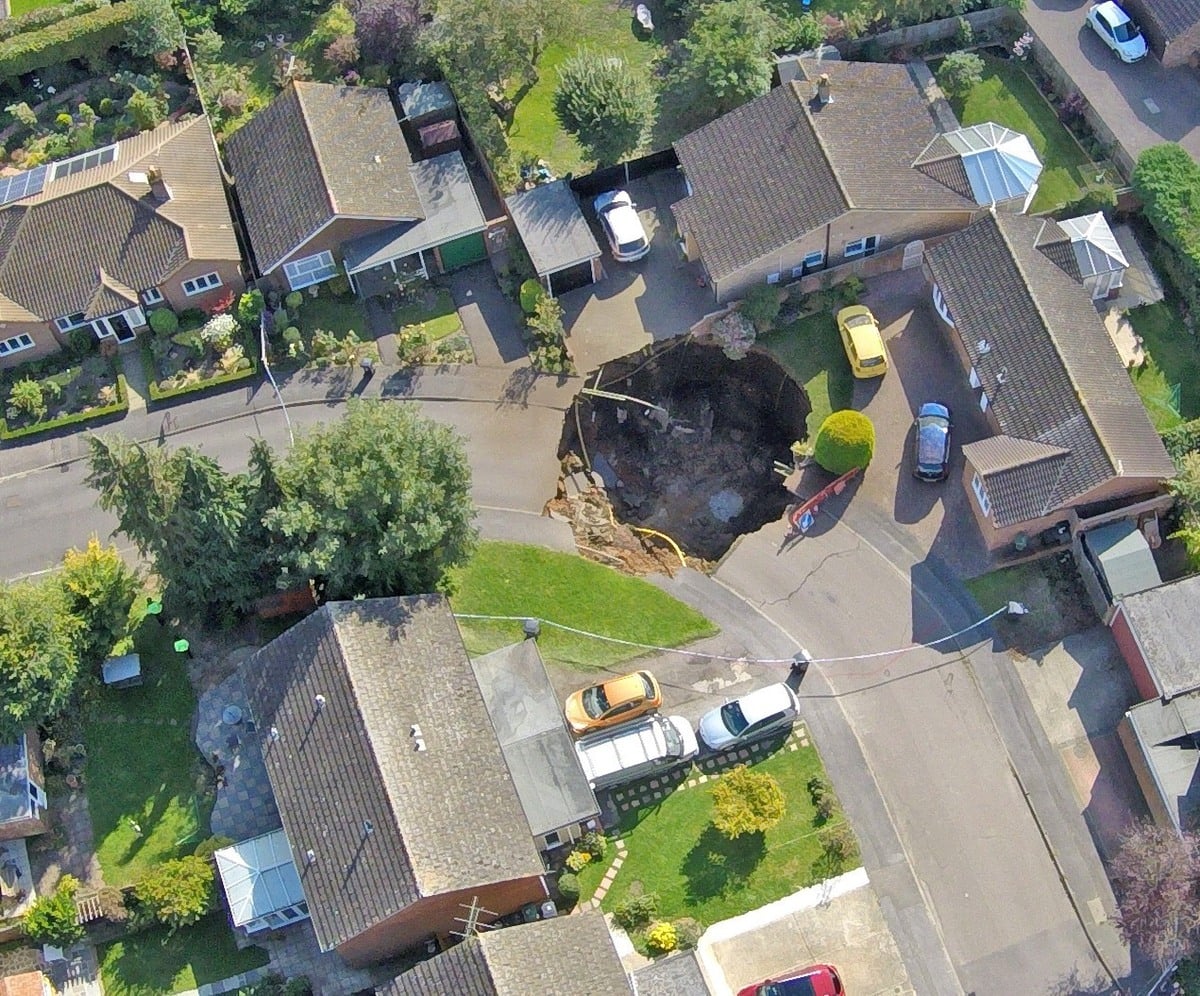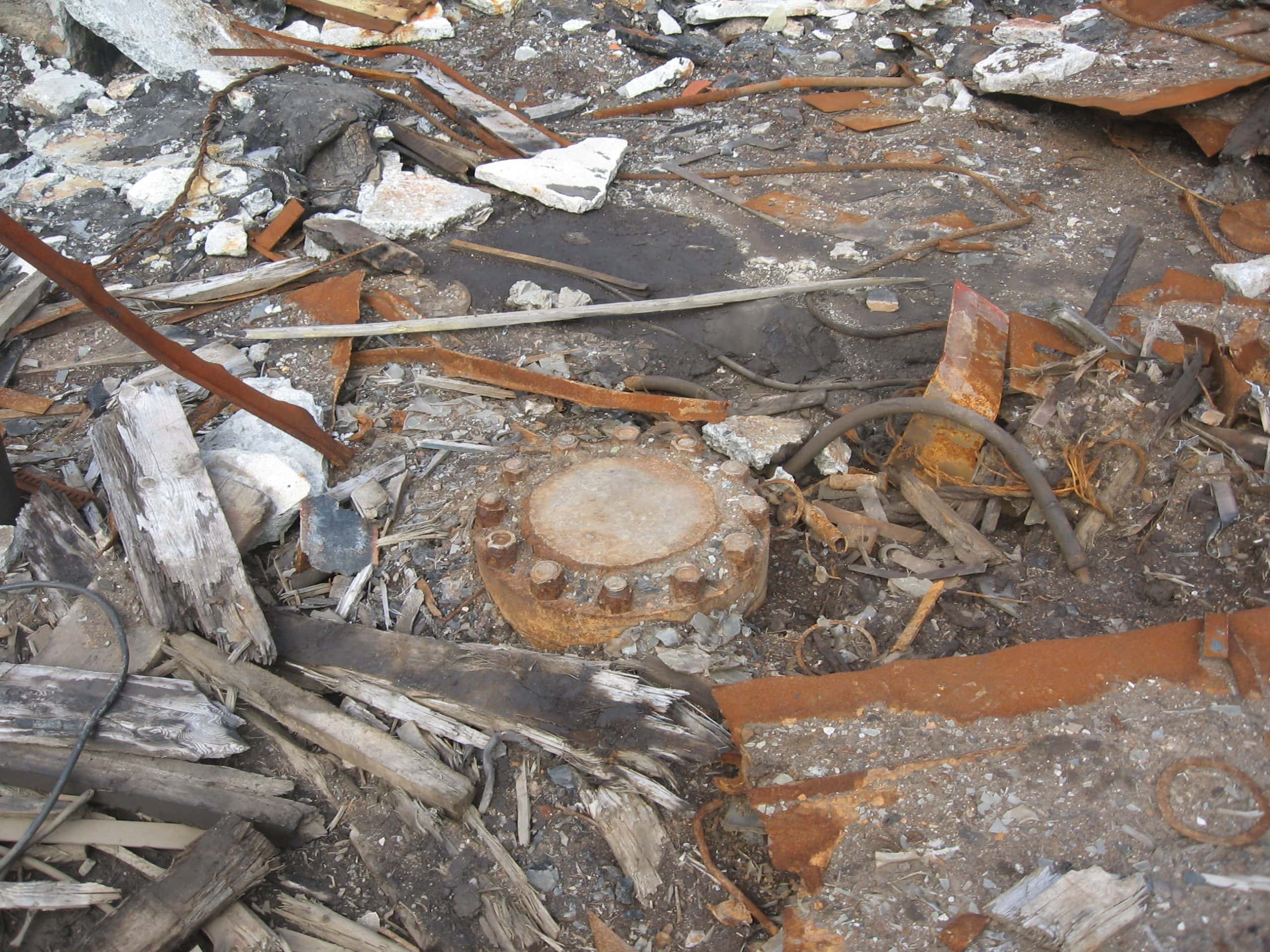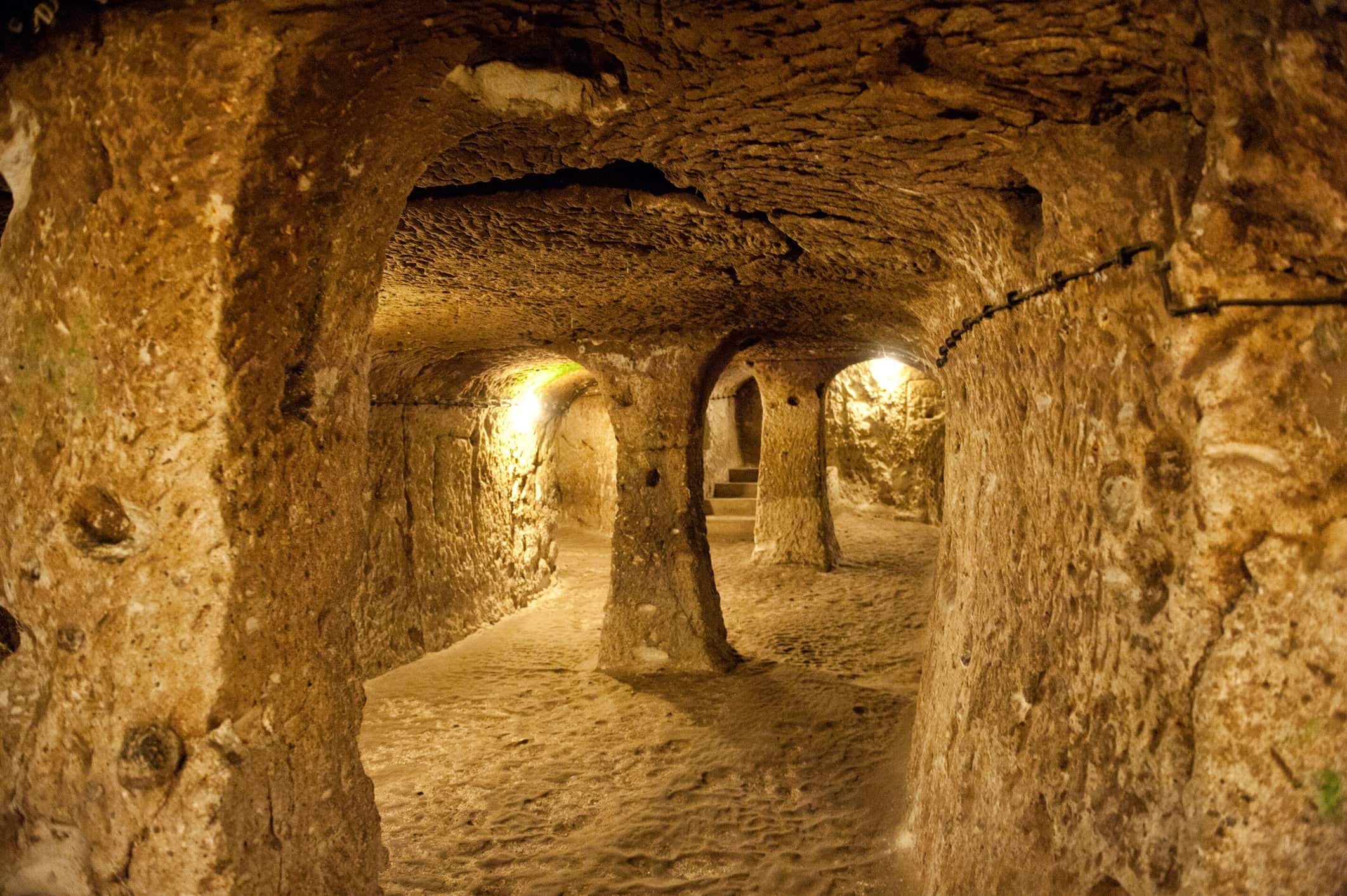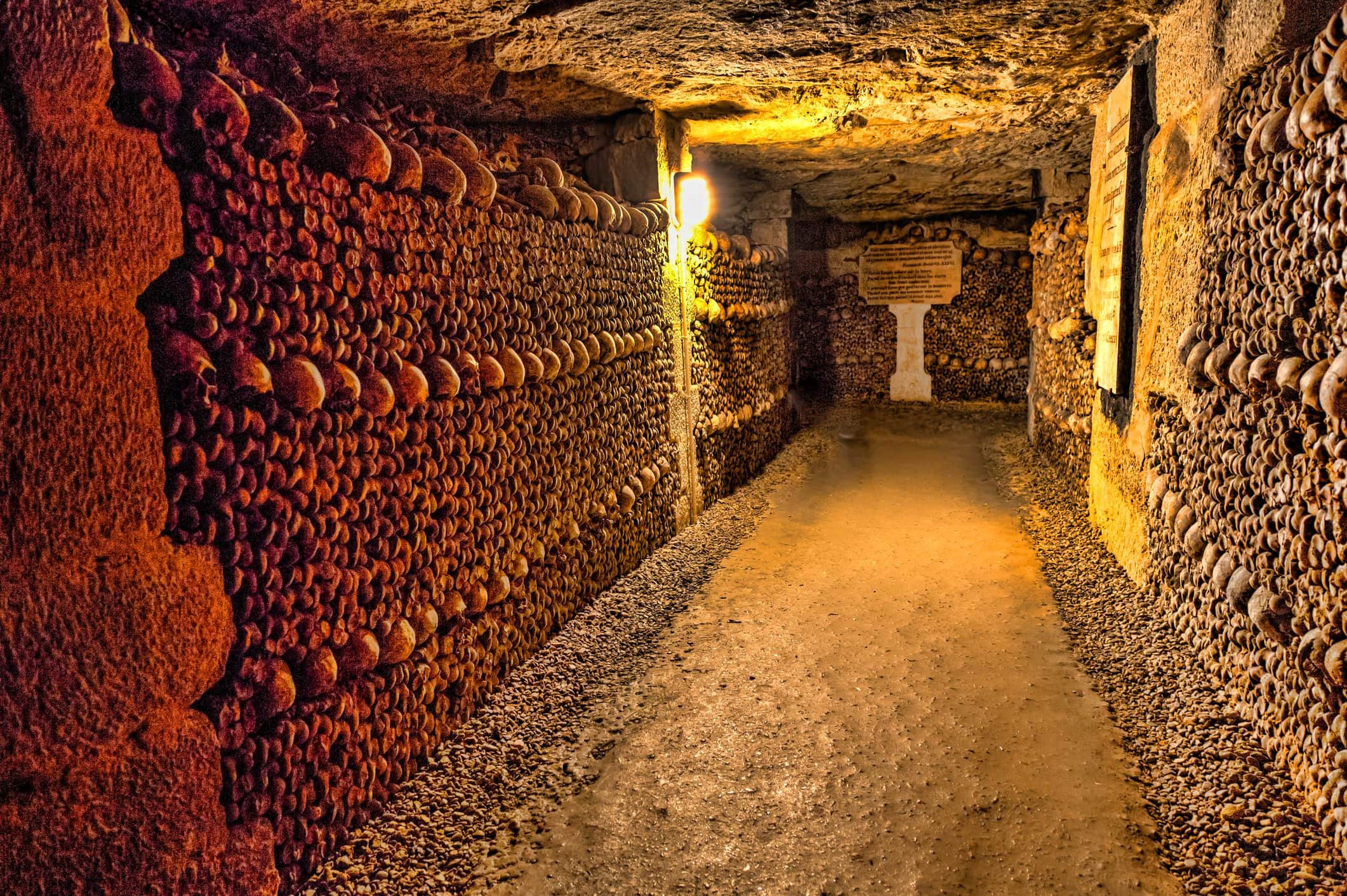
During the night of October 1, 2015, a quiet cul-de-sac in St Albans, Hertfordshire, was disturbed by an ominous rumbling. As curtains twitched open, residents saw to their horror, that part of the street was missing. The hole, 33ft deep and 66ft wide, turned out to be a giant sinkhole. At the time, I was staying on a nearby identical street where nothing ever happens.
Although this particular crater was reasonably small on the sinkhole scale, it was still nightmarish: a reminder of how much around us is unseen and how little it takes to shake our sense of normality. Of course, I wasn’t alone in my terror. The fear of the underground – and of falling into the depths below the surface – is a deep and primal dread, as is thalassophobia, the fear of deep bodies of water and nyctophobia, the fear of the dark.
The underground embodies our greatest anxieties: where the dead are buried, mine shafts collapse, and strange creatures scuttle about in the dark. These subterranean fears are mirrored in early depictions of the afterlife in ancient Greece where, in an underworld realm called Hades, the god of the dead ruled over listless spirits. The wickedest sinners, known as Tartarus, were imprisoned on an even deeper level.
As the underground was seen as a receptacle for evil entities, it meant that any disturbance of the earth might result in all hell being let loose. Indeed, when plans for the London Underground were unveiled, the preacher Rev. John Cumming gloomily declared: “the forthcoming end of the world would be hastened by the construction of underground railways burrowing into the infernal regions and thereby disturbing the devil.”
These beliefs weren’t enough to deter people from digging, though. In fact, during the Cold War, the US and the Soviets embarked on a digging frenzy to go deeper into the earth than ever before. When the Russians drilled a hole in the Kola Peninsula in 1970, locals reported hearing the screams of hell from within, showing just how strong these hellish associations were, and still are, for some.
While the project was eventually abandoned in 1992 – and the hole has since been welded shut – the Kola Superdeep Borehole remains the most bottomless man-made hole in the world at 40,000ft (7.6 mi) deep. Remarkably, this is only about 0.2% of the distance to the Earth’s centre. Nobody has yet penetrated the Earth’s core, and partly this unknown makes the underground so fascinating and frightening.

Entrance to the Kola Superdeep Borehole
With its hellish associations, the term ‘underground’ is unsurprisingly synonymous with illegality and clandestine activities like gambling, prostitution and smuggling. It also links to the counterculture, radicalism and political resistance: countless examples exist of underground ideologies and movements, such as the secret groups that proliferated throughout German-occupied Europe during World War II to oppose Nazi rule.
The underground metaphor extends to digital realms, too: the deep web refers to parts of the Internet not fully accessible through standard search engines. On this virtual plane, hacking and criminality thrive. Rabbit holes can lead us on tangential journeys similar to urban explorers roaming physical belowground spaces. In large cities, the unmonitored underground is largely forbidden and out-of-bounds to the public, showing how pervasive the fear of these hidden spaces remains today.
Despite these ingrained fears, humans have continuously retreated underground – whether by choice or necessity. We have descended to seek protection, mine precious minerals, hide and bury things – and even attain spiritual guidance. But in the ancient world, protection was a priority.
In Cappadocia, Turkey, there are entire networks of underground cities. Given the region’s history of foreign invasions and conflict, it’s not hard to see why people thought to build a covert refuge. Derinkuyu, considered the deepest underground city (at approx. 280ft in depth), dates to around the seventh or eighth centuries and could have harboured around 20,000 people.

Derinkuyu Underground City is an ancient multilevel underground city in the Derinkuyu district in Nevsehir Province, Turkey.
The city, arranged over several levels, contains living quarters, stables, churches, storage rooms and wineries. It also boasts a sophisticated defence system. When threatened with attack, inhabitants of the city could seal off each level behind a series of monolithic stone doors, like an ancient cyberpunk realm.
The underground city of Tours in Northern France is believed to have been built in the third century AD and includes two miles of tunnels and more than 300 chambers – all of them situated 72ft below a forested plateau. While it originated as part of a Roman quarry, Naours was later expanded into a subterranean village after locals started using it as a refuge during the Middle Ages wars. At its peak in the 17th century, the city could accommodate 3,000 inhabitants.
But underground spaces aren’t just for the living, of course. Beneath Paris, the catacombs are a macabre labyrinth of more than 300km (186mi) of mining tunnels. When cemeteries began to overflow in the 1700s, the tunnels were converted to house the remains of more than six million Parisians. Though they’re illegal to enter, many still do. During World War II, some sections of the catacombs became hideouts for French Resistance fighters, while German soldiers used others as bunkers.
Similar tunnel networks exist in other parts of the world, but the most extensive catacombs are found in Odessa, Ukraine, with more than 2,000km (1,243 miles) of tunnels and at least 1,000 known entrances. As we witness yet another war unfolding and thousands of Ukrainians sheltering in basements and metro stations across Ukraine today, it’s striking how vital these underground spaces continue to be.

The Paris Catacombs
Elsewhere, marginalised communities have long sought shelter below the surface in the abandoned infrastructure of modern cities. These include the tunnel-dwelling homeless communities known as the “mole people” in New York and Las Vegas and the orphans who live beneath Bucharest, Romania. In Beijing, thousands of migrant workers inhabit a nuclear bunker turned underground city below the streets. In the Australian opal mining town of Coober Pedy, about half the population lives in “dugouts” or holes carved into the sides of hills, largely to escape the extreme daytime heat, often exceeding 40°C (104 °F).
But as Will Hunt points out in his book Underground: A Human History of the Worlds Beneath Our Feet (2019), humans aren’t designed for underground living. In one chapter, he references a sensory deprivation experiment undertaken by psychologist Donald Hebb and tries to replicate it by spending 24 hours in the primordial darkness of a cave. Below ground, Hunt described experiencing sensations we don’t have access to on the surface, of coming into other senses. “Everything is magnified underground. It’s like your entire nervous system is blooming,” he told Vice.
From the results of the original studies, Hebb noted how the human mind essentially invents sensory stimuli in the absence of it, and visions and hallucinations are common for those spending long stretches in isolation and darkness. Perhaps it is for this reason that the underground has also served as a spiritual retreat where mystics seek wisdom in the dark and resurface transformed.
“One of the most profound discoveries in my research was that cultures throughout history and worldwide have gone into dark subterranean spaces to perform religious rituals,” Hunt tells me. “It’s something we see in Native American cultures, where shamans would go into caves to carry out vision quests; in Ancient Greece, oracles were always situated in shelters; and in Abrahamic traditions, there are stories throughout the Bible of prophets going into caves to communicate with God …
“I think the reason for that is just how unique the underground environment is: a place of darkness, stillness, where echoes are strange, where rock formations are unlike anything on the surface, and so when you’re entering these spaces just on a sensory perception level, you have an otherworldly experience.”
If above ground represents conscious, rational thought, then below ground symbolises the unconscious. Fictional narratives detail journeys below the surface, such as Jules Verne’s Journey to the Centre of the Earth (1864) and H.G. Wells’s The Time Machine (1895), with its portrayal of a cannibalistic subterranean species called the Morlocks. In the Netflix series Stranger Things, the Upside Down is an alternate dimension existing in parallel to the human world: a cold, dark mirror of the world above, obscured by an omnipresent fog. In each case, the underground discloses certain truths and lessons about how we live our lives on the surface.
“The way psychologists talk about how to understand a person truly, you look into their subconscious,” says Hunt. “I think to truly understand how our world works, and we think of ourselves as human beings, you have to look into the hidden places.
“At a time when it’s straightforward to talk about how different and divided we all are, the history of our interaction with the underground reveals commonalities … It takes us back to a sort of shared heritage, a shared root of humanity.”
Watch out for the next instalment, where we’ll discover the secrets beneath the UK capital, from the mysterious Cold War-era tunnel systems to the long-forgotten rivers that still flow under London today.



1 Comment
Thank you for posting this interesting article . I wa unaware of the underground city in Turkey. Looking forward to the next installment.